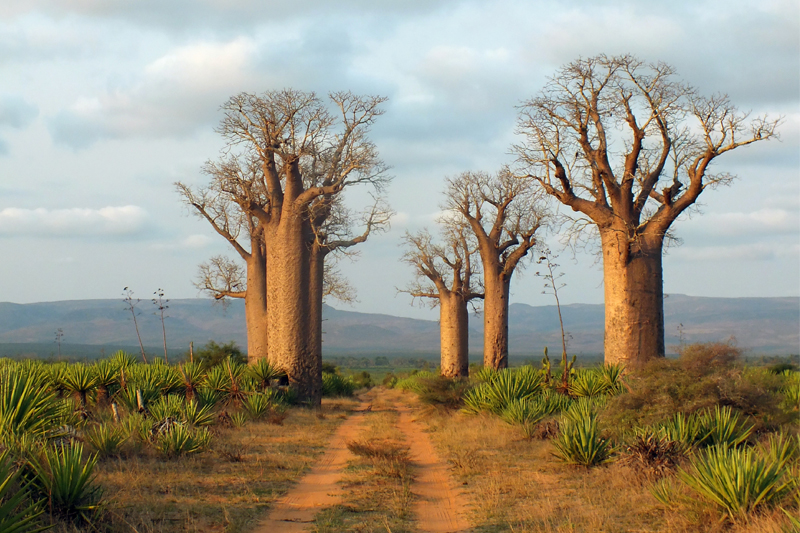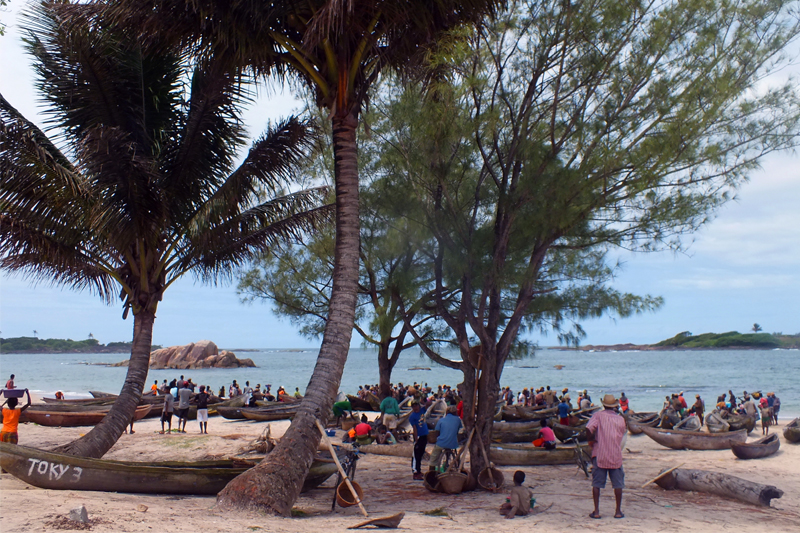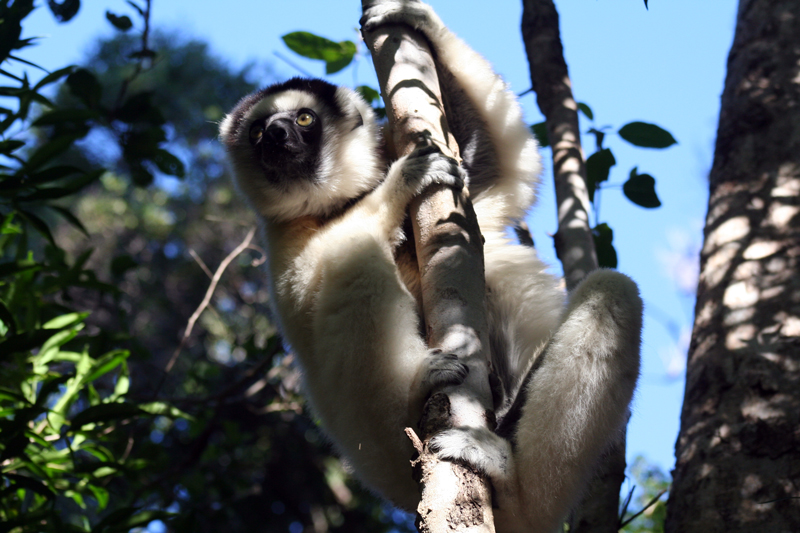Mandrare River and the South East
Mandrare and Manafiafy offer an incredible combination of wildlife, scenery & culture.
The Ifotaka Community Forests close to the Mandrare River in the south of Madagascar cover an area of approx. 22000 ha of protected spiny and gallery forest in one of the country’s least touristy settings. Day and night walks take place in the spiny forest which is home to the diurnal Verreaux’s sifaka (the infamous ‘dancing’ lemur), the nocturnal white-footed sportive lemur and both the grey and grey brown mouse lemur. Morning walks in the gallery forest offer excellent opportunities for spotting the iconic Ringtail lemur.
Birdlife is impressive with malachite kingfishers, Scops owl, Frances sparrowhawk, hookbill vanga and giant coua’s just some of the resident species.
The area has a significant cultural attraction. Visits to the local village and markets plus walks in the sacred forests of the fearless Antandroy tribe give a wonderful insight into their lives and in particular their tradition of ancestor worship and their belief that their forebears still play an active role in their daily lives.



Further east, beyond a belt of sisal plantations, is the Berenty Reserve, one of Madagascar’s best known reserves. Although a rather tame experience, Berenty offers a great opportunity to view some of the iconic lemur species. The reserve covers 250 acres, and is set amidst a privately owned sisal plantation. The trails through the forests are in good order and, being wide and flat, offer easy walking conditions.
The main attraction for visiting Berenty are the six species of lemur which are regularly seen; the same four as at Ifotaka plus the red-fronted brown lemur and the fat-tailed dwarf lemur. During September and October, the ringtail lemurs breed and the young are frequently seen. There are also 85 species of birds in Berenty including the Madagascar green pigeon, lesser vasa parrot, crested coua, white-browed owl, and hook billed vanga. The habitat is equally varied with 118 species of tree.
During your stay, you can also visit the sisal factory, and the local estate museum which warrants more than just a cursory glance and offers an extremely interesting insight to the early sisal pioneers and the local people and their traditions.
On the coast north-east of Fort Dauphin is Baie Saint Luce where French colonists first landed in the 1600’s and at the southern end of which is the village of Manafiafy. Hemmed between coastal rainforest and the ocean this area offers a combination of beach relaxation, cultural exploration and wildlife viewing.
The rainforests are home to a variety of interesting bird species as well as five species of lemur (collared brown, Southern woolly, thick-tailed dwarf, brown mouse and sportive). A large population of giant fruit bats reside in a protected area of the forest, the mangroves are home to crocodiles and the waters are rich with marine life (including humpback whales from June to November). As well as whale-watching and nature walks (by day and night), activities include canoeing, snorkelling, boat excursions, sport fishing and visiting the local fishing village.

